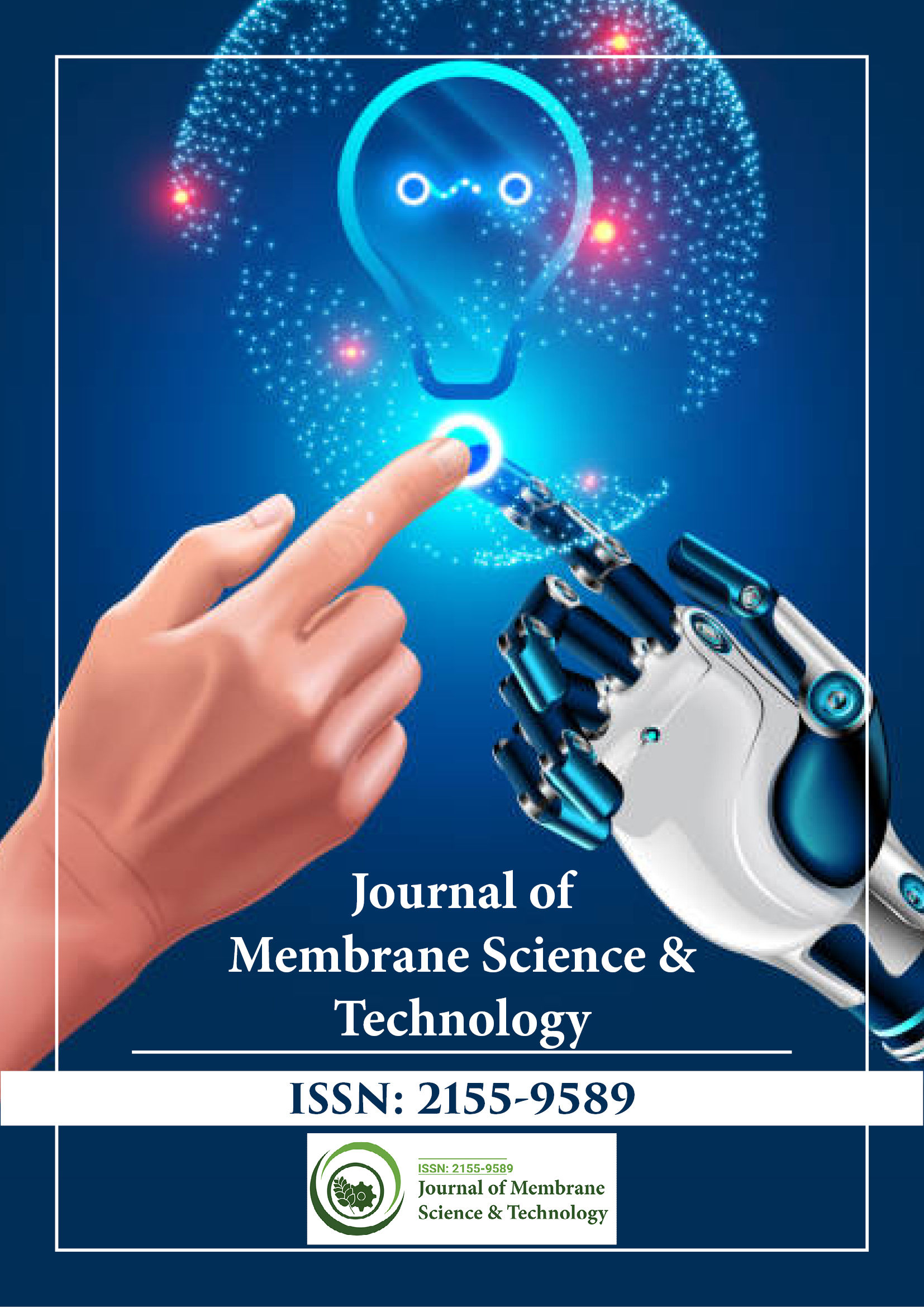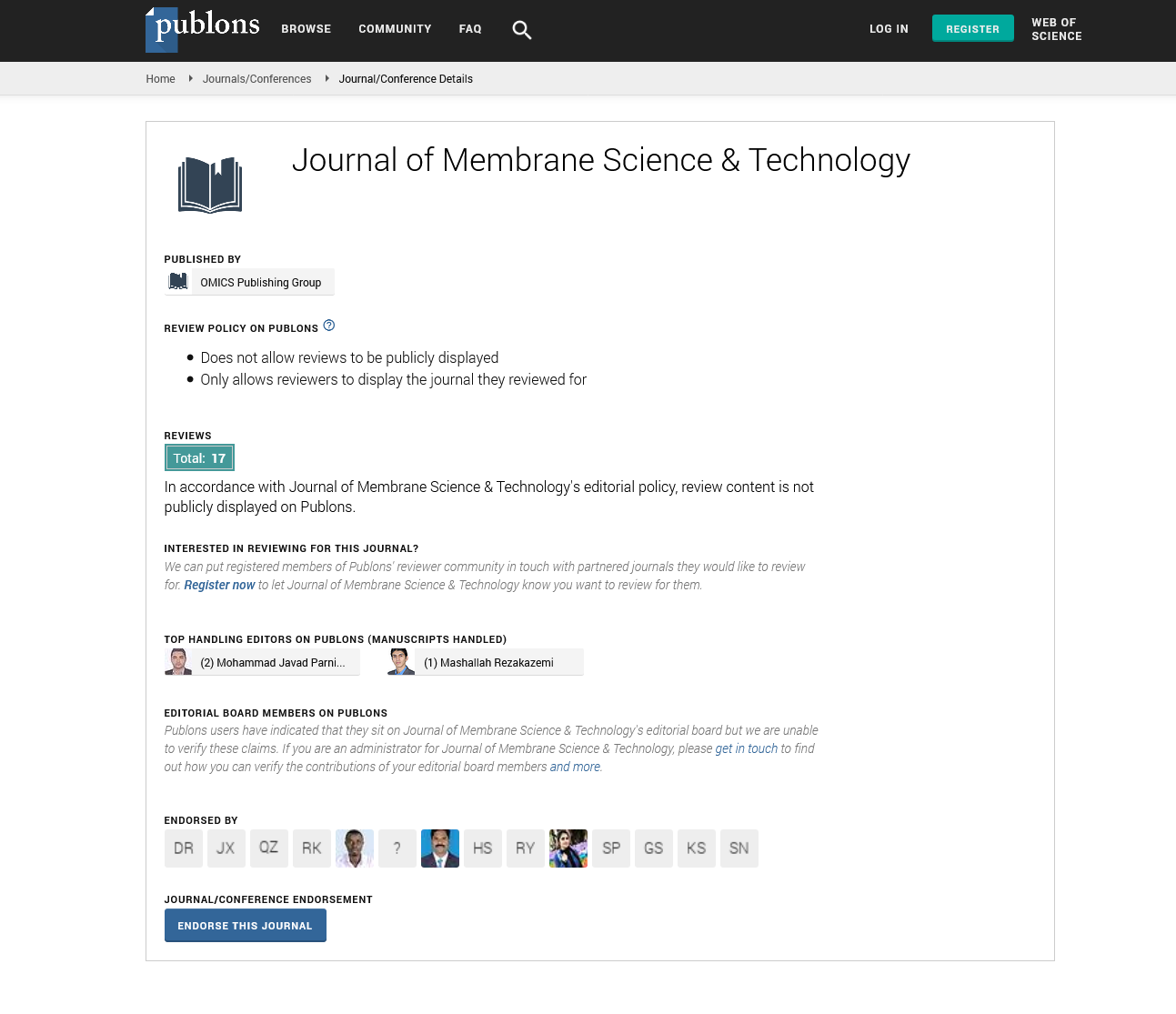Indexed In
- Open J Gate
- Genamics JournalSeek
- Ulrich's Periodicals Directory
- RefSeek
- Directory of Research Journal Indexing (DRJI)
- Hamdard University
- EBSCO A-Z
- OCLC- WorldCat
- Proquest Summons
- Scholarsteer
- Publons
- Geneva Foundation for Medical Education and Research
- Euro Pub
- Google Scholar
Useful Links
Share This Page
Journal Flyer

Open Access Journals
- Agri and Aquaculture
- Biochemistry
- Bioinformatics & Systems Biology
- Business & Management
- Chemistry
- Clinical Sciences
- Engineering
- Food & Nutrition
- General Science
- Genetics & Molecular Biology
- Immunology & Microbiology
- Medical Sciences
- Neuroscience & Psychology
- Nursing & Health Care
- Pharmaceutical Sciences
Commentary - (2024) Volume 14, Issue 4
Advancements in Membrane Distillation for Sustainable and Energy-Efficient Desalination
Matteo Vargas*Received: 29-Dec-2024, Manuscript No. JMST-24-27302; Editor assigned: 02-Dec-2024, Pre QC No. JMST-24-27302 (PQ); Reviewed: 16-Dec-2024, QC No. JMST-24-27302; Revised: 23-Dec-2024, Manuscript No. JMST-24-27302 (R); Published: 30-Dec-2024, DOI: 10.35248/2155-9589.24.14.407
Description
Membrane Distillation (MD) has emerged as a innovative desalination technology, offering an alternative to traditional processes like Reverse Osmosis (RO) and multi-stage flash distillation. MD uses a temperature gradient across a hydrophobic membrane to separate water from salts, making it highly energy- efficient in low-temperature environments. With a growing global demand for freshwater, especially in arid regions, MD provides an effective solution for desalination while consuming less energy. This article examines recent innovations, major challenges and the environmental impact of membrane distillation, exploring how it can contribute to sustainable water treatment.
Membrane distillation
Unlike pressure-driven membrane processes such as RO, MD relies on a temperature difference across a hydrophobic membrane to drive the separation process. The membrane’s hydrophobic nature repels liquid water, allowing only water vapor to pass through. On the opposite side, condensation occurs, collecting purified water. MD operates at lower pressures and temperatures than traditional distillation methods, making it suitable for desalination applications, especially when low- grade heat sources are available.
MD can be configured in various modes, including Direct Contact Membrane Distillation (DCMD), Air-Gap Membrane Distillation (AGMD), Vacuum Membrane Distillation (VMD) and Sweeping Gas Membrane Distillation (SGMD). Each configuration has unique benefits and limitations, with DCMD being the simplest and most common for desalination applications.
Recent innovations in membrane distillation for desalination
Several innovations have emerged in membrane materials, system design and energy integration to improve MD performance in desalination applications:
Advanced membrane materials: Traditional MD membranes are often made from polymers like polypropylene or Polytetrafluoroethylene (PTFE), but researchers are exploring new materials, including graphene oxide and carbon nanotubes, to enhance membrane permeability and thermal conductivity. These materials improve water vapor flux while maintaining high salt rejection rates, which are significant for efficient desalination.
Hybrid MD systems with renewable energy sources: Integrating MD with renewable energy sources, such as solar or geothermal energy, has gained attention as a sustainable approach to desalination. Solar-driven MD systems, for example, can use solar thermal energy to create the necessary temperature gradient, reducing reliance on fossil fuels and minimizing greenhouse gas emissions.
Energy recovery and waste heat utilization: Innovations in energy recovery systems and the use of waste heat sources have made MD more efficient. Low-grade waste heat from industrial processes can be repurposed for desalination in MD systems, maximizing energy utilization. This approach is particularly useful in industries with high heat discharge, such as power plants and petrochemical facilities.
Benefits of membrane distillation in desalination
Membrane distillation offers unique advantages for desalination, especially in regions with high energy costs and limited freshwater sources:
Low energy requirement: MD operates at temperatures below 100°C, making it feasible to use low-grade or renewable heat sources. This low energy requirement is especially advantageous in remote or off-grid locations where traditional desalination methods are impractical.
High salt rejection: MD provides nearly complete salt rejection, as only water vapor passes through the membrane. This makes it highly effective for desalinating seawater and brackish water, as well as treating high-salinity wastewater.
Conclusion
Membrane distillation offers a promising solution for sustainable desalination, with advantages in energy efficiency, scalability and environmental impact. Recent innovations in materials, hybrid systems and renewable energy integration have improved MD performance, addressing major limitations in desalination applications. However, challenges in fouling, material costs and large-scale implementation remain. As research continues, MD has the significant to transform desalination practices, providing a cleaner, more sustainable water treatment solution for both industrial and municipal applications.
Citation: Vargas M (2024). Advancements in Membrane Distillation for Sustainable and Energy-Efficient Desalination. J Membr Sci Technol. 14:407.
Copyright: © 2024 Vargas M. This is an open-access article distributed under the terms of the Creative Commons Attribution License, which permits unrestricted use, distribution, and reproduction in any medium, provided the original author and source are credited.

